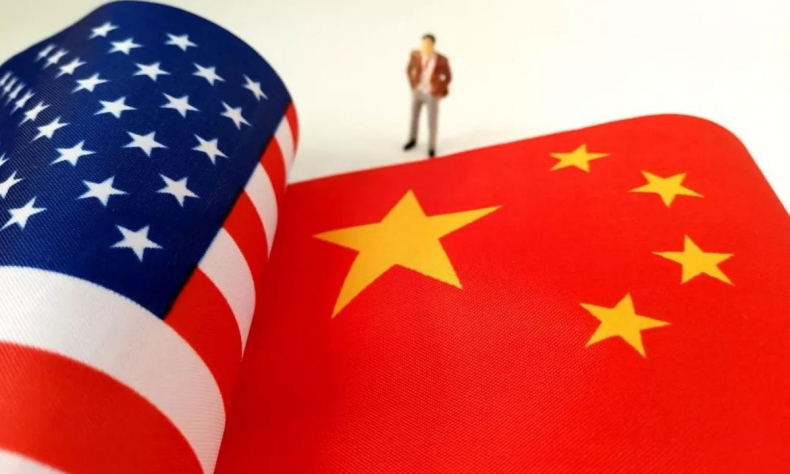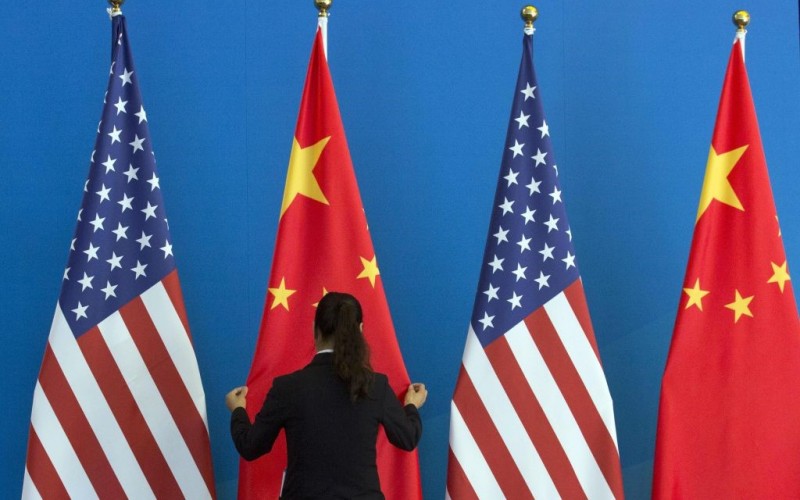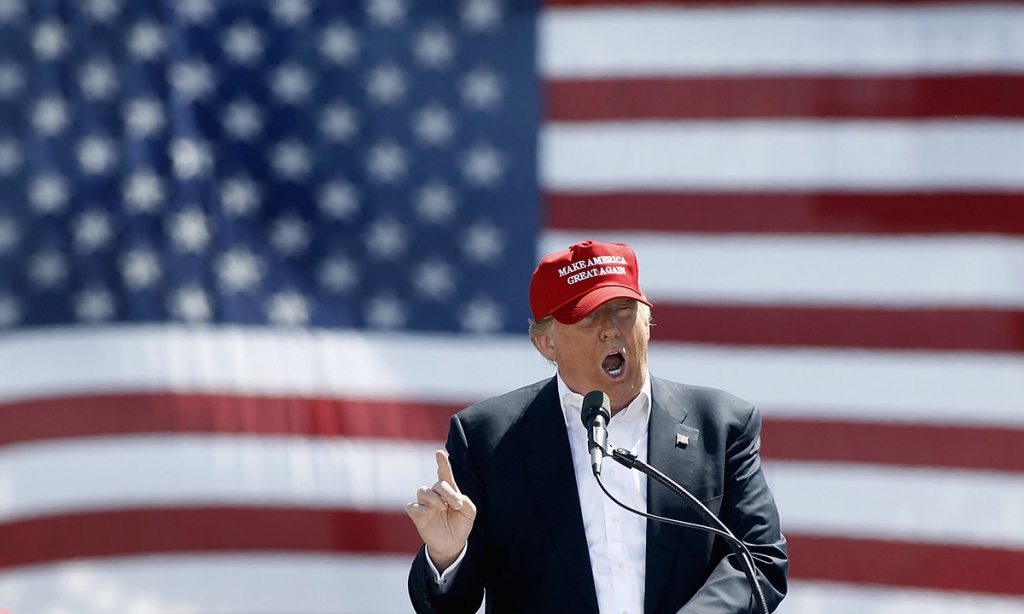40 Years of China-U.S. Relations

History has also shown that the normalization of Sino-U.S. relations is good for both countries as well as the world.
Four decades have passed since the normalization of Sino-U.S. relations. As two major countries with different cultural backgrounds, social systems and ideologies, differences and frictions do exist, but the growing common interests go far beyond the friction. With the world situation and the domestic scenario of both countries undergoing dramatic changes, Sino-U.S. relations have also experienced ups and downs, but in general, ties have kept advancing.
Throughout the 40 years, what can be assured is that cooperation and mutual benefits have been the theme as well as the essence of bilateral relations. And both countries have benefited from a healthy and stable Sino-U.S. relationship, which, at the same time, has also promoted peace, stability and prosperity in the world. The basically benign interaction between the two countries in the past 40 years has helped them garner rich experience in handling their relations.

Mutual understanding
To maintain sound bilateral ties, the two countries need a clear and correct understanding of the strategic motives and intentions of the other side. This was also the premise for Sino-U.S. relations returning to the right track in the 1970s. At that time, only after China realized that the United States’ Viet Nam war was not targeting China, it began sincerely to set about easing relations with its previous outsized foe. On the other hand, the U.S. recognized that China had no intention to expand its power in Asia and that the Communist Party of China would remain China’s powerful leadership core, a reality that could not be challenged by external forces. The two sides then decided to meet each other halfway. Forty years on, mutual understanding remains the foundation of their ties.
China follows the path of peaceful development, and the rejuvenation of the nation is intended to realize people’s aspiration for a better life. China does not intend to challenge the United States, or to replace its supremacy. U.S. President Donald Trump’s current China bashing policy stems from the misperception of his administration toward China, and China will demonstrate its sincerity with concrete actions.
Respecting core interests
Respecting each other’s core interests is extremely important for the sound and steady development of bilateral relations. In April 2001, a mid-air collision between a U.S. aircraft and a Chinese interceptor fighter jet near the Chinese island province of Hainan resulted in an international dispute. But once that was settled, China-U.S. relations remained stable for eight years during the administration of George W. Bush. It was the longest period where the two countries enjoyed such stable development in their relationship, the main reason being that both respected each other’s core interests.
For China, promoting national development and safeguarding national unity are of vital importance. The United States indicated its stance against “Taiwan independence.” The two countries also developed sound economic ties after China joined the World Trade Organization in December 2001.
At the same time, combating international terrorism and preventing the proliferation of weapons of mass destruction were major tasks of the United States. China, with concrete steps, stood together with the United States in the fight against global terrorism.
China also plays an irreplaceable role in mediating the Korean Peninsula issue, cooperating with the U.S. side over its concern on nuclear proliferation. Common support and cooperation on these major issues involving core interests have ensured the stability of Sino-U.S. ties.
The Taiwan question is the most sensitive one in Sino-U.S. relations. Three joint communiqués have established the guiding principles for both sides to handle the issue, but the United States has maintained a two-faced policy. While recognizing the one-China principle—that there is only one China and Taiwan is an inalienable part of it—it also maintains military relations with Taiwan, selling it arms, which has a cyclical impact on Sino-U.S. ties. However, if there is any attempt by a separatist force to split Taiwan from China, the United States would also warn the separatists. The United States has, to a certain extent, helped to curb the pro-“Taiwan independence” forces and worked together with the Chinese Government to safeguard the stability of the Taiwan Straits.
However, there are still “Taiwan independence” supporters in the United States, who could affect cross-Straits ties. If the U.S. chooses to stand in the way of the reunification of the Chinese mainland and Taiwan, there would be more serious consequences than trade friction.
Crisis management
Bilateral ties have faced several crises over the past decades. Besides the midair collision incident, the attack on the Chinese Embassy during the NATO bombing of Belgrade, Yugoslavia, in May 1999 was another instance. However, both crises were controlled successfully, limiting the negative impact to a relatively small scale and a short period of time.
Some important lessons can be learnt from these experiences. For instance, maintaining effective channels for communication helps prevent misunderstandings and misjudgments. It’s important to adhere to the principle of putting national interests rather than ideology first when dealing with bilateral relations. Negotiations should be conducted while making sure not to put each other into a corner. The current trade friction between the two countries, though a crisis in a sense, has been effectively managed so far. To address this and similar crises in the future, both sides must act in a prudent, practical and restrained manner.
The National Security Strategy and the National Defense Strategy released by the Trump administration and the current trade friction demonstrate a substantial shift in the U.S. policy on China, marking a new phase in Sino-U.S. relations. During this period, cooperation and disputes will coexist, as always. A new normal of long-term competition between the two powers marked by intermittent compromises will be a historic inevitability and challenge.
This period may last for a long time, possibly a decade or two, until a new model of Sino-U.S. interaction is formed. But it is unlikely that Sino-U.S. relations will be frozen or even break off. In the past four decades, the Chinese economy has become an integral part of the highly integrated world economy. Today’s global industrial and value chains have been formed by decades of development following the law of the market economy and are the fittest survivors of competition. As the world’s top two economies and trading nations, China and the United States are indispensable components of the global industrial and supply chains. It is impossible that their economic interdependence can be cut off by just an order from any administration.
Late Chinese leader Deng Xiaoping regarded the normalization of Sino-U.S. relations as an important part of the overall reform and opening-up policy. History has also shown that the normalization of Sino-U.S. relations is good for both countries as well as the world. In the future, the two still need to work hard to seek common ground and resolve disputes through dialogue on the basis of equality and mutual respect. The development of bilateral ties relies on positive factors, be they official or civil, central or local, or any sector of the economy. A generally stable Sino-U.S. relationship is possible if all these positive factors are tapped.
Tao Wenzhao is a senior researcher with the Institute of American Studies at the Chinese Academy of Social Sciences
Source:Beijing Review
 Facebook
Facebook
 Twitter
Twitter
 Linkedin
Linkedin
 Google +
Google +












